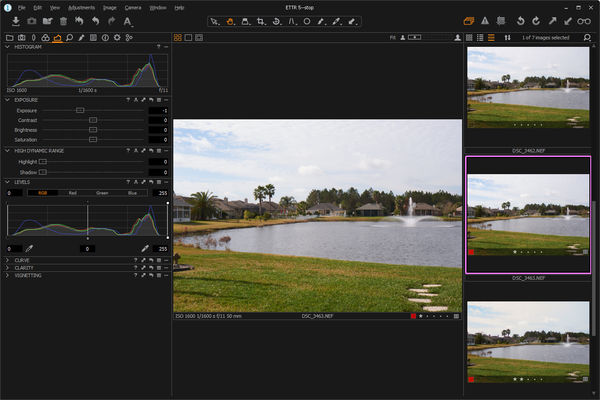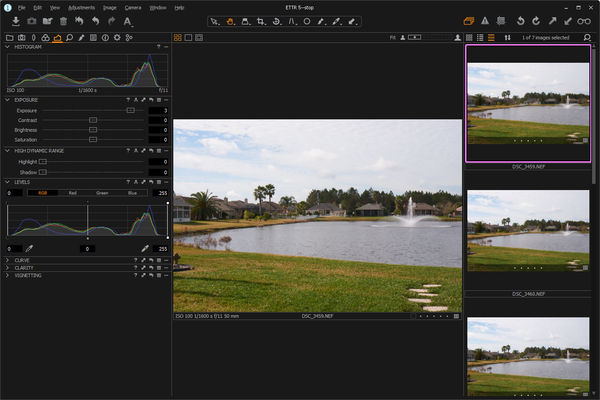What is the Camera's Dynamic Range? - Part 2
Dec 26, 2016 10:52:21 #
In the previous thread (link in next post) I mentioned that there are two aspects of dynamic range (DR):
1. The capacity of the sensor itself (100%)
2. The numeric capacity of the raw file (for 14 bits, a value up to 16,383)
I covered why these two dynamic ranges need to be considered separately at any ISO higher than base ISO, usually 100.
I showed this effect with an example (link in next post) of a low DR scene captured at a constant exposure with ISO settings from 100 to 6400. Below I will post the results of the same process applied to a very low, medium and high DR scene.
The camera I used is a Nikon D6100 which, according to DxOMark, has a DR of 14.36 Ev at ISO 100, 12.23 Ev at ISO 800 and 9.23 Ev at ISO 6400. They also report a S/N ratio of 45.5 dB at ISO 100, 37 dB at ISO 800 and 28 dB at ISO 6400.
Their numbers and graphs are not as important as the visual evidence I am supplying. You may not own a D6xx but you can easily replicate my test with whatever camera you have.
I selected the exposure by metering the scene in the matrix (averaging) mode at ISO 800. I then set that exposure on Manual and exposed at ISO 100, 200, 400, 800, 1600, 3200 and 6400.
1. The capacity of the sensor itself (100%)
2. The numeric capacity of the raw file (for 14 bits, a value up to 16,383)
I covered why these two dynamic ranges need to be considered separately at any ISO higher than base ISO, usually 100.
I showed this effect with an example (link in next post) of a low DR scene captured at a constant exposure with ISO settings from 100 to 6400. Below I will post the results of the same process applied to a very low, medium and high DR scene.
The camera I used is a Nikon D6100 which, according to DxOMark, has a DR of 14.36 Ev at ISO 100, 12.23 Ev at ISO 800 and 9.23 Ev at ISO 6400. They also report a S/N ratio of 45.5 dB at ISO 100, 37 dB at ISO 800 and 28 dB at ISO 6400.
Their numbers and graphs are not as important as the visual evidence I am supplying. You may not own a D6xx but you can easily replicate my test with whatever camera you have.
I selected the exposure by metering the scene in the matrix (averaging) mode at ISO 800. I then set that exposure on Manual and exposed at ISO 100, 200, 400, 800, 1600, 3200 and 6400.
Dec 26, 2016 11:15:23 #
The original thread is at What is the Camera's Dynamic Range?.
The low DR example can be found here.
Here is a very low DR scene, a foggy landscape, with even less contrast than the indoor scene in the first thread. This time the exposure was 1/500 @ f/8 for all seven images. I adjusted the Exposure (gain) slider in Capture One Pro to get each image to look like the unadjusted ISO 800 version.
You may see a slight difference in the wind pattern on the water and throughout the scene due to the movement of the fog and small changes in illumination.
Both of these tests show that for low and very low DR scenes it is only the exposure that matters, not the ISO. The sensor's DR is so wide that it will tolerate a significant range of ISO settings.
But here there are no blown highlights and the level of noise, if you can find any, is the same in all seven images.
These two tests show that for a low or very low DR scene there is no benefit to be gained from ETTR/EBTR. If I wanted less noise I could simply lower the ISO and accept the suggested exposure.
When the sun comes out I will run this test again for a wide and a very wide DR scene.
The low DR example can be found here.
Here is a very low DR scene, a foggy landscape, with even less contrast than the indoor scene in the first thread. This time the exposure was 1/500 @ f/8 for all seven images. I adjusted the Exposure (gain) slider in Capture One Pro to get each image to look like the unadjusted ISO 800 version.
You may see a slight difference in the wind pattern on the water and throughout the scene due to the movement of the fog and small changes in illumination.
Both of these tests show that for low and very low DR scenes it is only the exposure that matters, not the ISO. The sensor's DR is so wide that it will tolerate a significant range of ISO settings.
But here there are no blown highlights and the level of noise, if you can find any, is the same in all seven images.
These two tests show that for a low or very low DR scene there is no benefit to be gained from ETTR/EBTR. If I wanted less noise I could simply lower the ISO and accept the suggested exposure.
When the sun comes out I will run this test again for a wide and a very wide DR scene.
ISO 100 +3 Ev
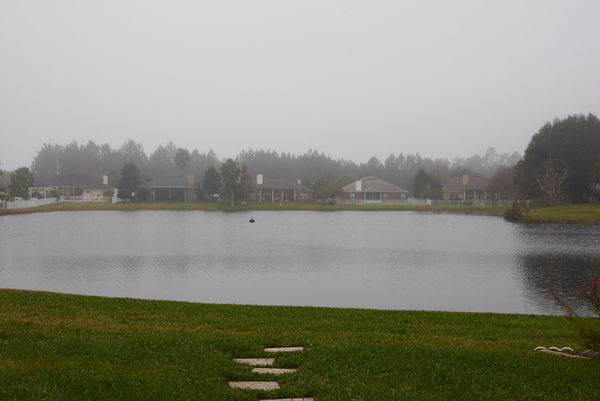
(Download)
ISO 200 +2 EV
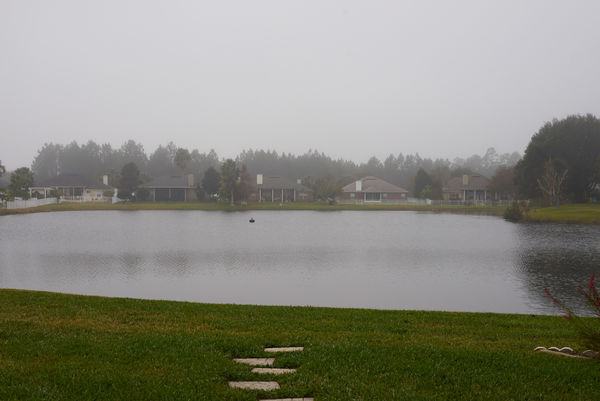
(Download)
ISO 400 +1 Ev
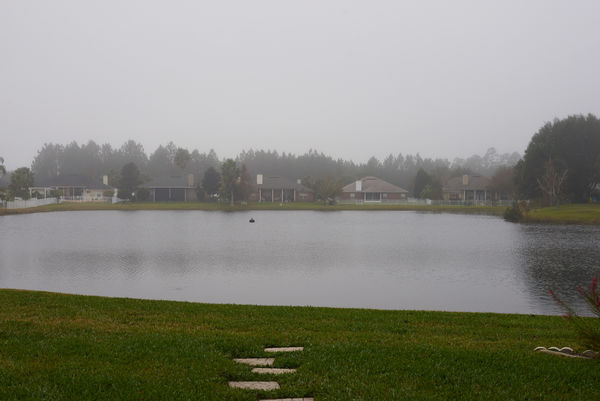
(Download)
ISO 800 +0 Ev
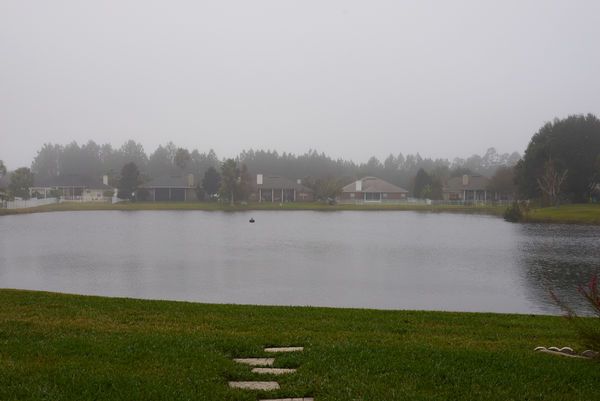
(Download)
ISO 1600 -1 Ev
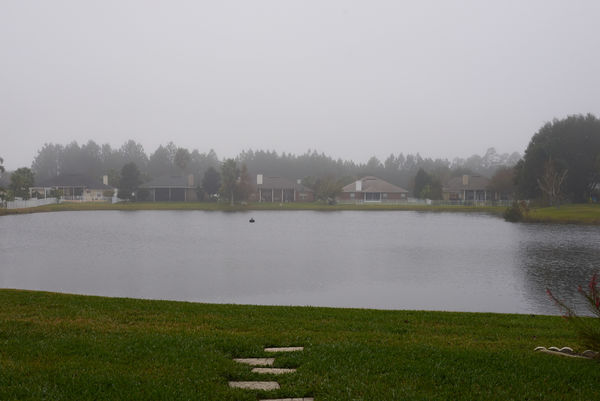
(Download)
ISO 3200 -2 Ev
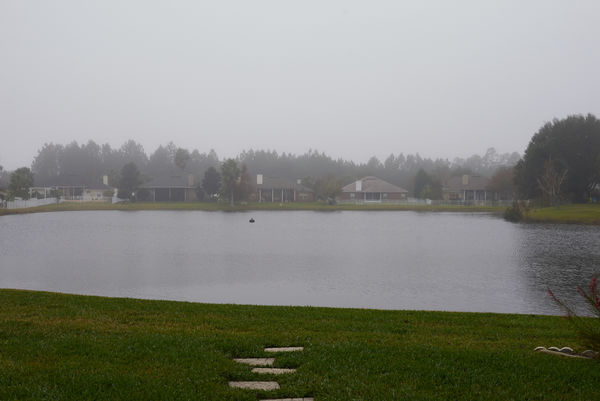
(Download)
ISO 6400 -3 Ev
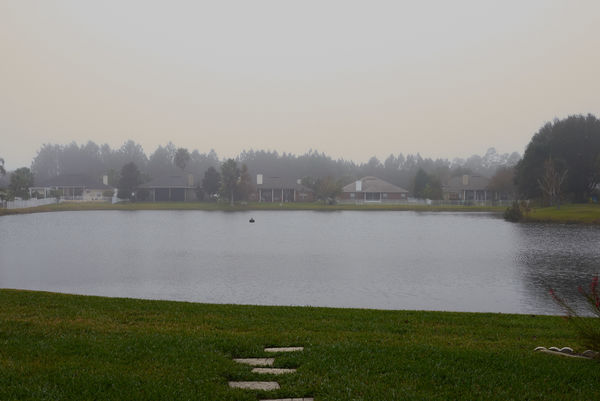
(Download)
Dec 27, 2016 13:34:57 #
selmslie wrote:
... When the sun comes out I will run this test again for a wide and a very wide DR scene.
Still a very foggy morning so I tested an extreme DR case. I knew this was going to be an impossible image to capture in one shot but I wanted to test the limits of the raw file numeric values.
In this example I spot metered the wall under the smaller frame at ISO 800, f/8 and got 1/3 second. I used the same location later to set the white point.
For all seven images, I maximized the highlight and shadow recovery slider. You can see that the noise level (look at the dark books) remained pretty much the same in all images because they all got the same exposure.
The differences are all in the highlights. There is color in the image coming through the window that starts to go away around ISO 400 and is mostly gone by ISO 800. Even the tonality starts to go by ISO 1600 and it gets worse from there on.
The bottom line is that this is a scene that would be very difficult to capture in a single image. Looking at the histogram on the camera, even the ISO 100 version had the brightest portion past the right end of the scale. To get the outside portion right would have required and exposure 3 Ev longer than 1/3 second or about 2.5 seconds. Although that might have worked for the highlights, the shadows might have then been out of reach. The only remedy would be multiple exposures combined into an HDR image. An additional challenge would be to get a reasonable white balance for the outside portion separately from the indoor white balance by applying a mask.
ISO 100 +3 Ev
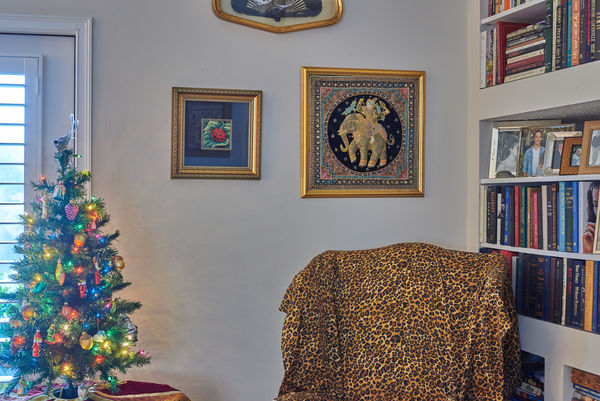
(Download)
ISO 200 +2 Ev
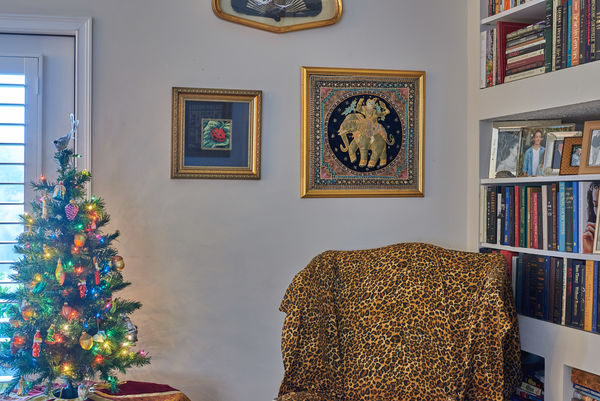
(Download)
ISO 400 +1 Ev
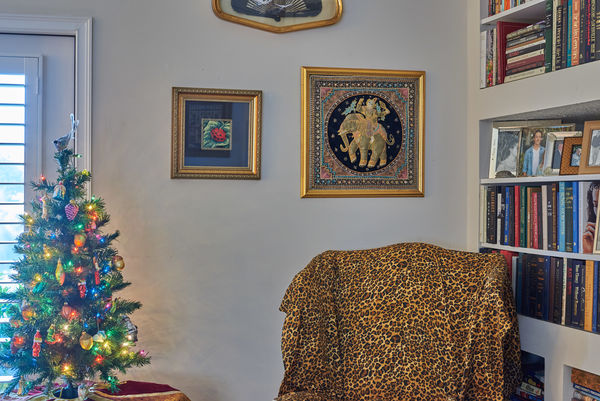
(Download)
ISO 800 +0 Ev
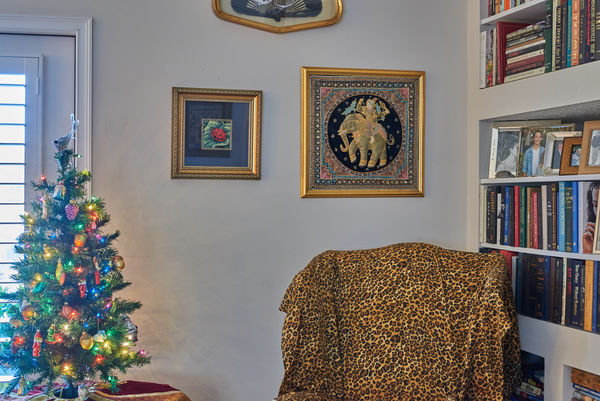
(Download)
ISO 1600 -1 Ev
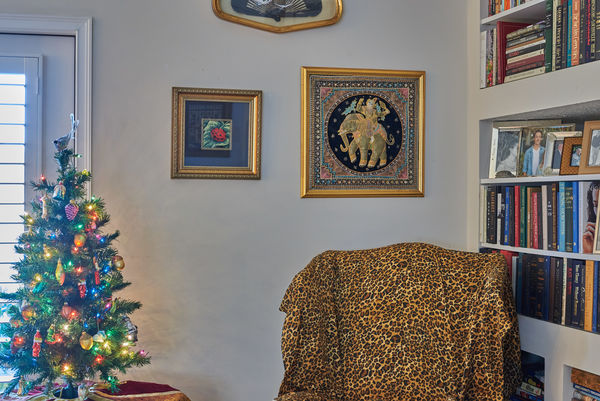
(Download)
ISO 3200 -2 Ev
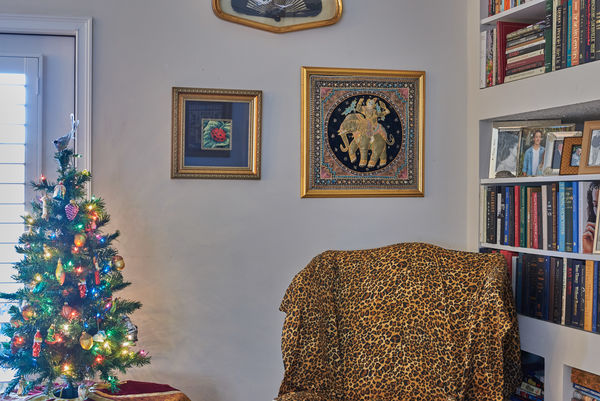
(Download)
ISO 6400 -3 Ev
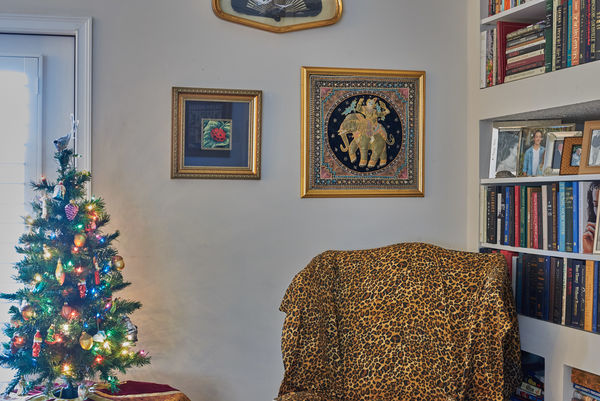
(Download)
Dec 27, 2016 13:42:34 #
Really appreciate you doing all this. One question while I'm thinking about it.. What's the best way to determine the actual DR of a scene before you shoot it? I've read and understand Adams book on the zone system, but from what I see he's not covered the full range, or others Zones are smaller in size. What more do I need to know?????
Dec 27, 2016 14:27:55 #
martinfisherphoto wrote:
Really appreciate you doing all this. One question while I'm thinking about it.. What's the best way to determine the actual DR of a scene before you shoot it? I've read and understand Adams book on the zone system, but from what I see he's not covered the full range, or others Zones are smaller in size. What more do I need to know?????
You could try a hand held spotmeter or use the spot metering mode of your camera but even that has it limitations. A spot meter reading is still an average of the brightness inside the designated circle, 1 degree in diameter in a hand held meter.
The Zone System describes what can be seen in the print, not the range of exposure values in a scene. It may or may not track at one exposure value per zone. That's up to you.
The Zone System is related closely to what is possible to see in a print, more specifically in a B&W print, under normal indoor illumination. The examples Adams used were taken from his own subject matter and we have to do a little interpretation to apply them to our own photography.
The descriptions that he lays out a still applicable to all printed photographs if we abstract them to remove the specific subject matter:
0 - Maximum black: ink or developed silver can't get any blacker, RGB value 0,0,0
I - Dark tonality with no clear texture
II - Dark texture with no clear detail
III through VII - dark to light detail
VIII - Light texture with no clear detail
IX - Light tonality with no clear texture
X - Maximum white: can't get any whiter than the paper, no ink or silver, 8-bit RGB value 255,255,255
When you are looking at an image, if you see detail, you are probably seeing several adjacent pixels with brightness two or more zones apart.
You can do all sorts of stuff to the captured image in the nine interior zones to increase or decrease overall or local brightness, contrast or color but the middle five zones are pretty much where the image is going to be appreciated . Those five zones may be initially aligned with the five Ev steps around your middle gray meter reading but that's just where your post processing begins.
That's not a short answer but if you have been learning about the Zone System you have probably seen longer descriptions.
Dec 27, 2016 14:44:26 #
Just following the discussion-- and I do not pretend to know as much as Selmslie. However I would recommend a book by Chris Johnson. He was an understudy to AA. I'm not at home now, but I believe the title is "The Practical Guide to the Zone System for Digital Photography"-- Or something like that. It's an easy to understand guide.
Dec 27, 2016 20:47:47 #
selmslie wrote:
... Looking at the histogram on the camera, even the ISO 100 version had the brightest portion past the right end of the scale. To get the outside portion right would have required and exposure 3 Ev longer than 1/3 second or about 2.5 seconds. Although that might have worked for the highlights, the shadows might have then been out of reach. ...
Oops. I misspoke.
To get the highlights right would have meant moving the histogram to the left about three Ev. That would have meant changing the exposure from 1/3 second to 1/25 second. It would certainly have decreased the S/N ratio significantly (about 9 dB) and increased the noise in the darker portions of the image.
Regardless of whether the shadow information could have been brought back to the visible range, that much amplification of the noise would have been unacceptable.
Combining multiple exposures into a single HDR image remains the only solution in this case.
Dec 28, 2016 13:46:06 #
If you suspect that this is getting tedious you should look at it from my viewpoint - ugh. Nevertheless, here is one more test.
This time I chose an ordinary outdoor scene in fairly bright sunlight. Once more I set the camera to f/11 but this time I used the Sunny 16 rule at ISO 800 to select an exposure of 1/1600 sec.
It's clear even in the thumbnails that highlights in the seventh image are blown. The color in the sky is gone. If you download, you can also see that there is no noise in the shadows in any of the seven images.
In this "normal" DR scene scene, the histogram for the ISO 800 version almost reaches the edge of the display on the right, at ISO 1600 it goes a little bit beyond and at ISO 3200 it seems to still be mostly within the ERADR zone. By ISO 6400 it has clearly gone too far.
I made no attempt to recover highlight information for any of the images displayed here. However, when I moved the Highlight recovery slider all the way to 100, the sky in the first four images got equally bluer. The ISO 3200 was slightly darker and the ISO 6400 image did not get any blue at all. This tells me that there is not more than a full Ev of cushion on the high side at ISO 800.
This test, like all of the others, clearly show that the presence of noise in an image is related to the actual exposure, not the ISO. This particular test also shows that high ISO can adversely affect the camera's DR.
This time I chose an ordinary outdoor scene in fairly bright sunlight. Once more I set the camera to f/11 but this time I used the Sunny 16 rule at ISO 800 to select an exposure of 1/1600 sec.
It's clear even in the thumbnails that highlights in the seventh image are blown. The color in the sky is gone. If you download, you can also see that there is no noise in the shadows in any of the seven images.
In this "normal" DR scene scene, the histogram for the ISO 800 version almost reaches the edge of the display on the right, at ISO 1600 it goes a little bit beyond and at ISO 3200 it seems to still be mostly within the ERADR zone. By ISO 6400 it has clearly gone too far.
I made no attempt to recover highlight information for any of the images displayed here. However, when I moved the Highlight recovery slider all the way to 100, the sky in the first four images got equally bluer. The ISO 3200 was slightly darker and the ISO 6400 image did not get any blue at all. This tells me that there is not more than a full Ev of cushion on the high side at ISO 800.
This test, like all of the others, clearly show that the presence of noise in an image is related to the actual exposure, not the ISO. This particular test also shows that high ISO can adversely affect the camera's DR.
ISO 100 +3 Ev
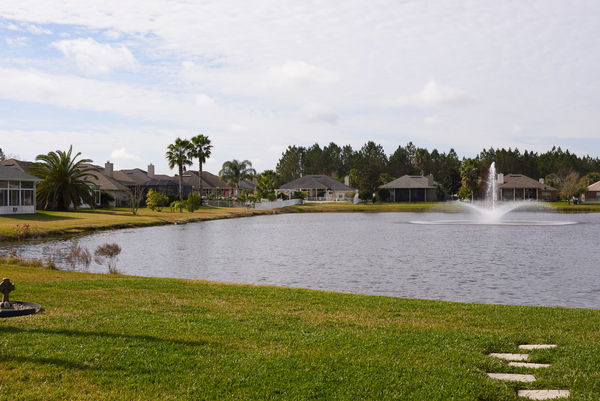
(Download)
ISO 200 +2 Ev
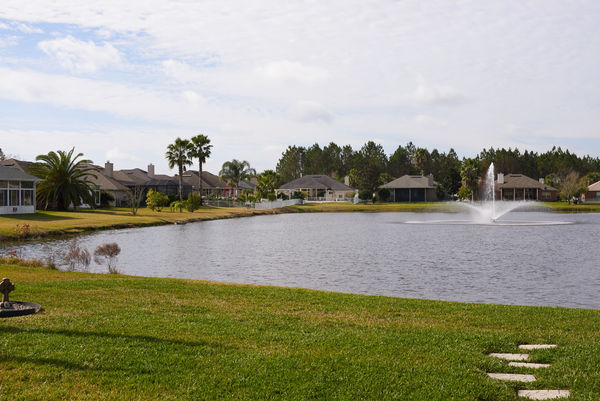
(Download)
ISO 400 +1 Ev
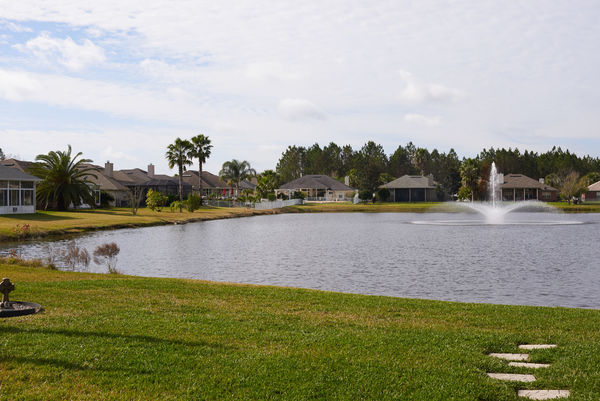
(Download)
ISO 800 +0 Ev
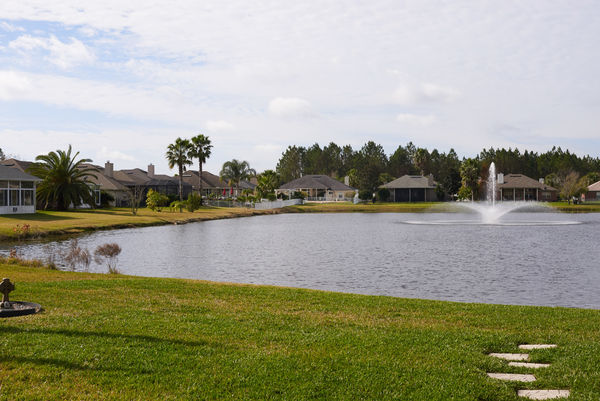
(Download)
ISO 1600 -1 Ev
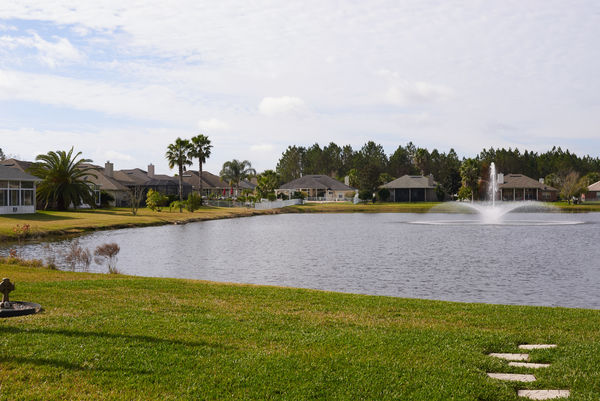
(Download)
ISO 3200 -2 Ev
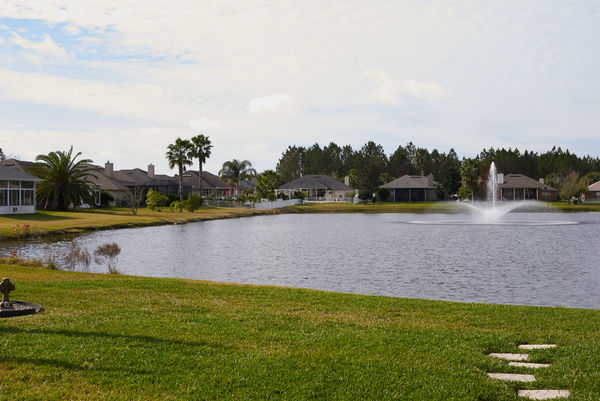
(Download)
ISO 6400 -3 Ev
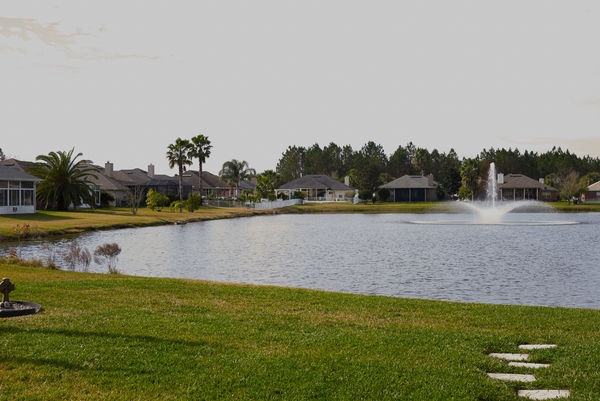
(Download)
Dec 28, 2016 14:52:17 #
Here is some more information about the last test. It shows the appearance of the edit sessions for two of the ISO settings during their raw conversion.
The top histogram indicates the content of the raw file after the -1 or +3 Ev adjustment is applied to the ISO 1600 and ISO 100 captures. Since nothing else has been done during the development process, the bottom histograms match the ones on top. The histograms reach neither the right nor the left edge of their display.
The two edit sessions show virtually the same histogram (the clouds were moving) indicating that the selection of ISO played virtually no part in the image rendition. The histogram started to break down with the ISO 3200 version.
This means that, whatever the actual DR of this particular scene, the camera has at least 4 stops of additional DR. It could actually be even more but there is no point in dropping the ISO to 50.
This also shows that ETTR/EBTR can be risky if you go too far in this case. More than one stop from the "normal" exposure setting is going to start causing problems and call for evasive action like using the Highlight slider.
On the other hand ETTL of up to 3 stops did no harm.
The top histogram indicates the content of the raw file after the -1 or +3 Ev adjustment is applied to the ISO 1600 and ISO 100 captures. Since nothing else has been done during the development process, the bottom histograms match the ones on top. The histograms reach neither the right nor the left edge of their display.
The two edit sessions show virtually the same histogram (the clouds were moving) indicating that the selection of ISO played virtually no part in the image rendition. The histogram started to break down with the ISO 3200 version.
This means that, whatever the actual DR of this particular scene, the camera has at least 4 stops of additional DR. It could actually be even more but there is no point in dropping the ISO to 50.
This also shows that ETTR/EBTR can be risky if you go too far in this case. More than one stop from the "normal" exposure setting is going to start causing problems and call for evasive action like using the Highlight slider.
On the other hand ETTL of up to 3 stops did no harm.
Dec 28, 2016 15:27:59 #
selmslie wrote:
... In this "normal" DR scene scene, the histogram for the ISO 800 version almost reaches the edge of the display on the right, at ISO 1600 it goes a little bit beyond and at ISO 3200 it seems to still be mostly within the ERADR zone. By ISO 6400 it has clearly gone too far. ....
There is critical important I left out of that post.
In this post on a separate thread I show how much of the sensor's physical dynamic range is actually being used at ISO 3200 (just over 3%) and at 6400 (just over 1.5%).
It's not the sensor's DR that is running out. It's the raw file's inability to store values greater that 16,383 after the signal recorded at the sensor is multiplied by a gain of 32x and 64x respectively.
The only time that the sensor and the raw file run out of capacity at the same time is at base ISO, when the gain is 1x.
If you want to reply, then register here. Registration is free and your account is created instantly, so you can post right away.



